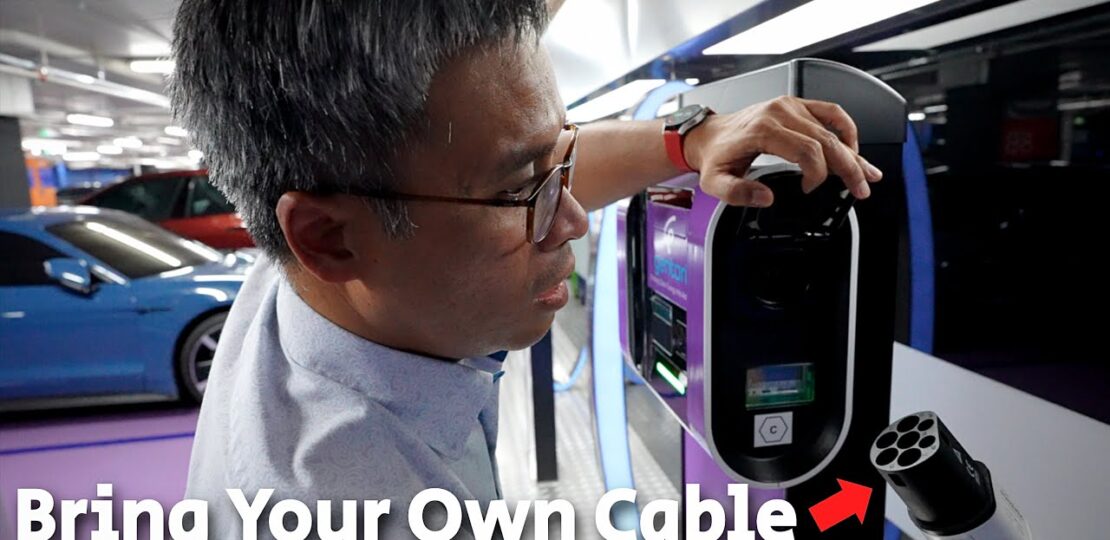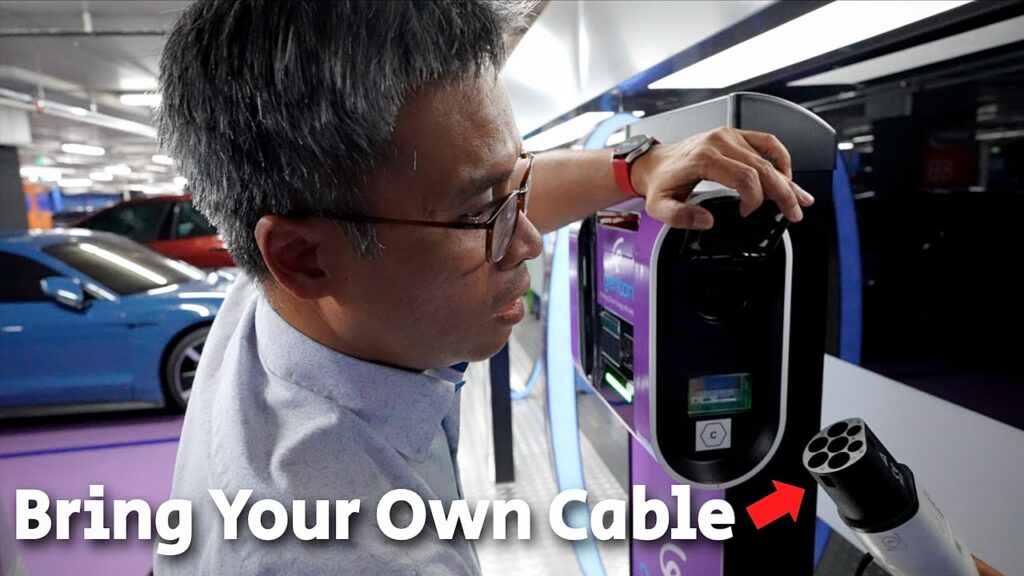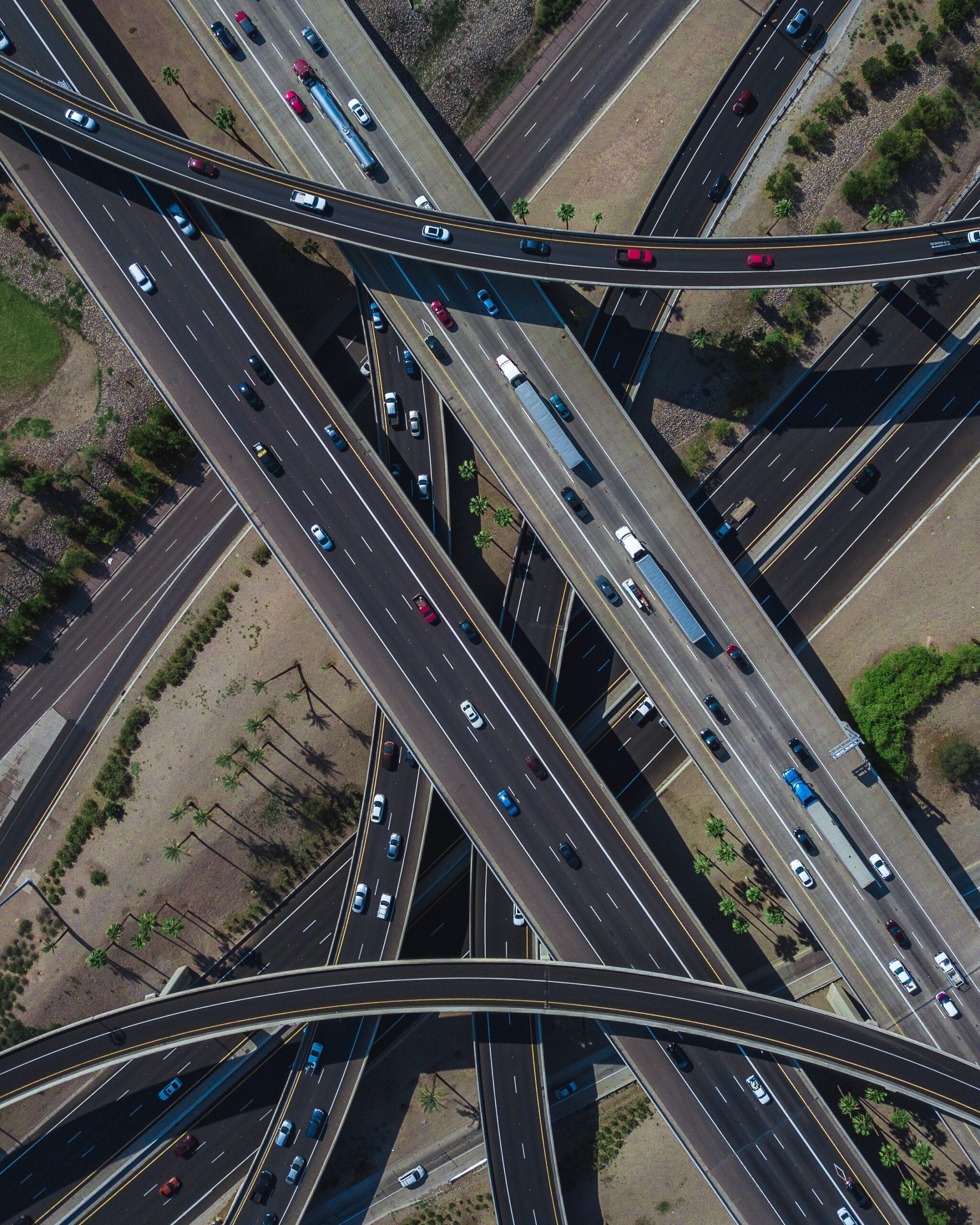GUIDE for Bring-Your-Own-Cable EV Chargers! (Suria KLCC Charging Hub)
September 23, 2023 | by Jacob Kang

EV chargers are becoming increasingly popular as more people make the transition to electric vehicles. There are several advantages to using EV chargers, including the environmental benefits of reducing emissions and the cost savings compared to traditional gasoline-powered vehicles. Additionally, EV chargers offer convenience and flexibility, allowing you to charge your vehicle at home or at designated charging stations.
However, there are also some challenges and considerations when it comes to using EV chargers. One drawback is the limited availability of charging stations, especially in certain areas or during peak times. Additionally, charging times can be longer compared to filling up a traditional gas tank, which can require some planning and patience. It’s also important to be aware of the different types of chargers and understand how they work to ensure a smooth and efficient charging process. Nonetheless, with the right knowledge and some helpful tips and tricks, using EV chargers can be a seamless and rewarding experience.

EV Chargers
Electric Vehicle (EV) chargers are essential infrastructure for the growing number of electric vehicle owners. These chargers allow EV owners to recharge their vehicles’ batteries, providing them with the power they need to continue their journeys. There are various types of EV chargers available, each with its own benefits and drawbacks. It is important for EV owners to understand the different types of chargers, as well as the advantages and disadvantages they offer.
Types of EV Chargers
-
Level 1 Chargers: Level 1 chargers are the most basic type of EV chargers. They use a standard household outlet to deliver power to the vehicle’s battery. While level 1 chargers are convenient because they can be used with any standard outlet, they have the slowest charging speeds and may take several hours or even overnight to fully charge an EV.
-
Level 2 Chargers: Level 2 chargers are more powerful than level 1 chargers and can be installed at home or in public charging stations. They provide higher charging speeds and can fully charge an EV in a matter of hours. Level 2 chargers require a dedicated charging station and a professional installation, making them more expensive than level 1 chargers.
-
DC Fast Chargers: DC Fast Chargers, also known as level 3 chargers, are the fastest charging option for EVs. These chargers use direct current (DC) power to charge the vehicle’s battery, allowing for rapid charging times. DC Fast Chargers are typically found in public charging stations and can charge an EV up to 80% in as little as 30 minutes. However, the installation and maintenance of DC Fast Chargers are more expensive than other charger types.
Benefits of EV Chargers
-
Environmental Friendly: One of the biggest advantages of EV chargers is their contribution to reducing greenhouse gas emissions. EVs produce zero tailpipe emissions, and by charging them with renewable energy sources, such as solar or wind power, their environmental impact can be significantly reduced.
-
Cost Savings: Charging an EV at home with a level 1 or level 2 charger can be much cheaper than refueling a conventional gasoline car. Electricity prices are generally lower than gasoline prices, meaning that EV owners can enjoy significant cost savings over the long term.
-
Convenience: EV chargers provide the convenience of charging a vehicle at home or at public charging stations. This eliminates the need to visit gas stations regularly, as EV owners can simply plug in their vehicles overnight or during the day to charge.
Drawbacks of EV Chargers
-
Charging Time: Compared to refueling a conventional gasoline car, charging an EV takes considerably longer. Even with the fastest DC Fast Chargers, it still takes several minutes or even hours to charge an EV fully. This can be a drawback for those who are used to the quick refueling times of gasoline cars.
-
Availability: Public charging stations are still relatively limited compared to gasoline stations. While the number of charging stations is increasing, there may be instances where EV owners struggle to find an available charger, especially during peak charging times.
-
Initial Cost: The installation cost of home charging equipment, such as level 2 chargers, can be quite high. Additionally, the cost of purchasing and installing DC Fast Chargers in public charging stations is also significant. These upfront costs can deter some potential EV owners.
Bring-Your-Own-Cable AC Chargers at Suria KLCC
Overview of Suria KLCC Charging Hub
Suria KLCC is Malaysia’s largest EV charging hub, boasting 43 AC chargers and 4 DC fast chargers. It offers a convenient location for EV owners to recharge their vehicles while enjoying the many amenities the mall has to offer. The charging hub operates on a bring-your-own-cable (BYOC) system, where EV owners are required to bring their own charging cables.
Charging Costs at Suria KLCC
At Suria KLCC, EV owners only need to pay for premium parking, which costs RM15 for the first hour and RM4 for every subsequent hour. The charging itself is complimentary, meaning there are no additional fees for using the AC chargers. This makes Suria KLCC an affordable and accessible option for EV owners in Malaysia.
Steps to Use Bring-Your-Own-Cable AC Chargers
To use the BYOC AC chargers at Suria KLCC, follow these simple steps:
-
Back up your car to the right position so that the charging port is easily accessible.
-
Retrieve your charging cable from your vehicle’s front trunk. Make sure to use the correct cable compatible with the AC charger.
-
Connect the smaller side of the cable to the charger’s port, ensuring that the holes align correctly.
-
Connect the larger side of the cable to your vehicle’s charging port.
-
The charging port will indicate availability with a color change, such as green.
-
The EV charger and your vehicle will communicate and initiate the charging process.
-
Monitor the charging status to know how much charge your vehicle is drawing. This information will help you estimate the charging time needed.
-
Lock your vehicle and proceed with your activities while your car charges.
By following these steps, EV owners can make use of the BYOC AC chargers at Suria KLCC and enjoy the convenience of charging their vehicles while they shop or dine.

Tips and Tricks for Using EV Chargers
Finding Charging Stations
To find charging stations, consider utilizing apps or websites dedicated to locating EV chargers. There are several popular options, such as PlugShare, ChargePoint, and Electrify America, that provide real-time information about the availability and location of charging stations.
Preparing Your Vehicle
Before charging your vehicle, make sure to park it in a suitable location that allows easy access to the charging port. Additionally, it is wise to familiarize yourself with your vehicle’s charging requirements, such as the maximum charging speed and the type of connector used.
Managing Charging Time
When planning your trips, factor in charging time to avoid running out of power. It is essential to have a rough estimate of how long it takes to charge your vehicle, depending on the charger type and your vehicle’s battery capacity. This will prevent any unexpected delays during your journey.
Additionally, be considerate of other EV owners and avoid occupying charging stations for longer than necessary. Once your vehicle is charged, promptly remove it from the charging station to allow others to utilize the facility.

Conclusion
EV chargers are a crucial element of the electric vehicle ecosystem, allowing EV owners to conveniently recharge their vehicles’ batteries. While they offer numerous benefits, such as cost savings and environmental friendliness, EV chargers also have drawbacks, including longer charging times and limited availability.
Suria KLCC’s bring-your-own-cable AC chargers provide a convenient and cost-effective solution for EV owners to charge their vehicles while enjoying the amenities of the mall. By following simple steps and considering tips and tricks, EV owners can make the most of their charging experience and seamlessly integrate EV ownership into their everyday lives.
In this video, Junaizee, the President of ZEVA (Zero Emissions Vehicle Association), will guide you on how to use the Bring-Your-Own-Cable AC Chargers at Suria KLCC. Suria KLCC is proud to have the largest EV charging hub in Malaysia, equipped with 43 AC chargers and 4 DC fast chargers. When you visit, you only need to pay for premium parking, which costs RM15 for the first hour and RM4 for each subsequent hour. The best part is, you don’t need to download any app or make any additional payments to charge your EV at these 22kW AC BYOC Chargers. If you’re interested in learning more about ZEVA, watch the video and don’t forget to subscribe for more content on Electric Vehicles!
Learn More About ZEVA: [link]
Find EV Chargers in Malaysia with PlugShare App: [link]
Social:
🐦 Twitter: @darenyoong
Disclosure: I am long TSLA. This is not a paid sponsorship.

RELATED POSTS
View all


